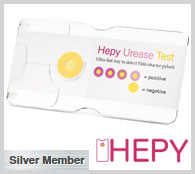Anti‐Citrullinated Antibodies Associated with NET Formation in Rheumatoid Arthritis
By LabMedica International staff writers
Posted on 14 Dec 2020
Several cell types can form extracellular traps as a primary immune response when pathogens invade the body or other inflammatory stimuli. These cell types include neutrophils, monocytes, eosinophils, and mast cells. The mechanism by which neutrophil extracellular traps (NETs) are formed is known as NETosis.Posted on 14 Dec 2020
Rheumatoid arthritis (RA) is a chronic autoimmune disease mainly involving inflammation of the cartilage and joints. A broad spectrum of autoantibodies is found in sera collected from patients with RA. However, anti‐citrullinated protein antibodies (ACPAs) and rheumatoid factor (RF) are the two autoantibodies most often used for the diagnosis and prognosis prediction of RA.

Image: Rheumatoid arthritis (RA)‐derived neutrophils exhibited increased spontaneous NETosis and increased NETotic response to tumor necrosis factor (TNF)‐α. Neutrophils were isolated from patients with RA and healthy controls (HC) (Photo courtesy of Central South University).
Clinical Scientists at the Central South University (Changsha, China) collected peripheral blood (PB), serum, and synovial tissue were obtained from patients with RA. Several parameters associated with RA severity, namely 28‐joint disease activity score (DAS28), erythrocyte sedimentation rate (ESR), and serum C‐reactive protein (CRP) and ACPA were measured during a clinical visit. ESR was measured by the Westergren method. ACPA was detected using an Immunoscan CCPlus commercial enzyme‐linked immunosorbent assay (ELISA) kit (Euro‐Diagnostica; Malmö, Sweden).
Serum NET remnants were detected by an ELISA in 51 patients with RA and 40 age‐ and sex‐matched healthy controls. MPO‐DNA complexes and NE‐DNA complexes were evaluated. Neutrophils were isolated by density gradient centrifugation using Polymorphprep solution (Axis‐Shield, Dundee, UK). Neutrophil extracellular traps were detected using an immunofluorescent method. Fibroblast‐like synoviocyte cells (FLS) were collected to determine the mRNA expression levels of IL‐6 and IL‐8 by real‐time polymerase chain reaction (PCR).
The team reported that in RA patients, NET remnants in the peripheral circulation were higher in extremely high ACPA titers when compared to in moderate ACPA titers. IgG antibodies containing ACPA can stimulate neutrophils to form NETs in a concentration‐dependent manner. Furthermore, significantly higher expression of the pro‐inflammatory cytokines IL‐6 and IL‐8 is detected after FLS cells interacted with NETs which derived from neutrophils stimulated with ACPA‐containing IgG antibodies.
The authors concluded that anti‐citrullinated protein antibodies may enhance NET formation and contribute to inflammation development in RA by stimulating NET formation, such as by subsequent activation of FLS cells by NETs. The study was published on November 28, 2020 in the Journal of Clinical Laboratory Analysis.
Related Links:
Central South University
Euro‐Diagnostica
Axis‐Shield




 assay.jpg)









